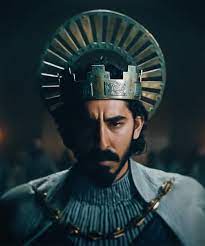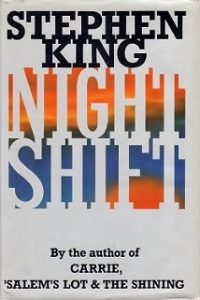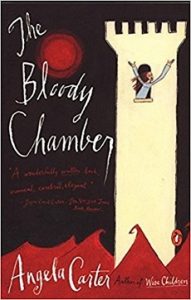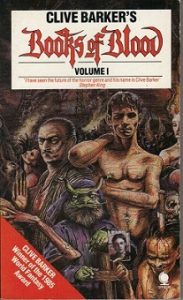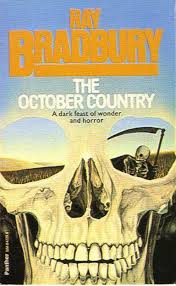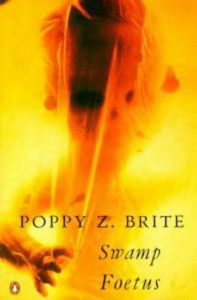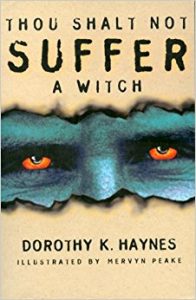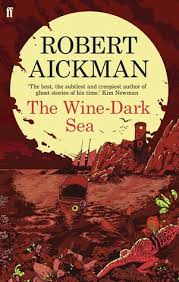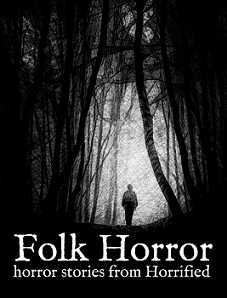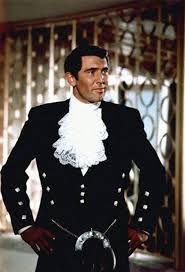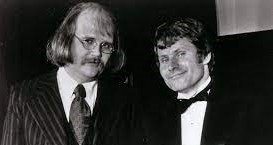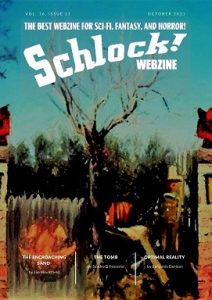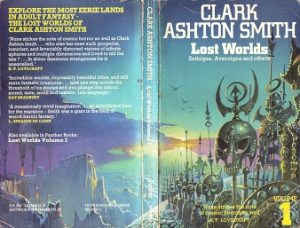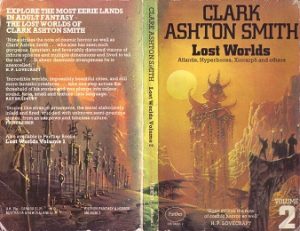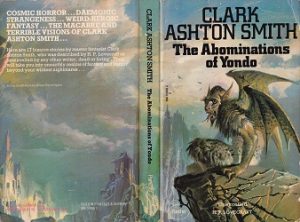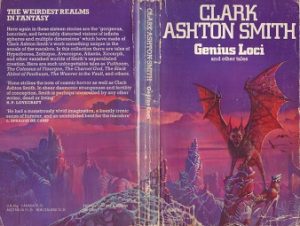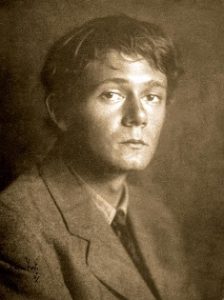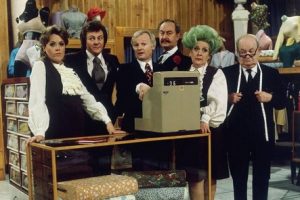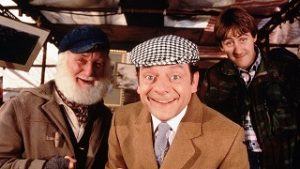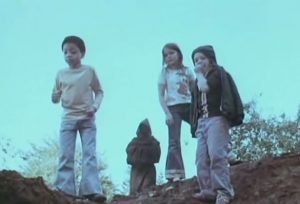
© Coronet Books
Continuing with the October / Halloween theme, here is a piece I first posted at the beginning of 2020 about a collection of spooky stories by the late, great Charles Beaumont.
Last year, while I was back visiting my family in Scotland, I happened to be hoking around in some boxes of books that belonged to me but that’d ended up gathering dust in a corner of my father’s attic. Inside one of those boxes I discovered a very old paperback called The Magic Man, a collection of mostly fantasy, horror and science-fiction stories by the late American writer Charles Beaumont originally published in 1965. Dimly, I recalled buying this for 25p, though the cover-price was a pre-decimalization 3/6, in a second-hand bookshop in the Lincolnshire town of Louth. I worked in Louth for five months in 1983 as a volunteer classroom assistant and houseparent at a residential school for boys with severe behavioral issues – ‘maladjusted’ boys, as they were called in those unsympathetic and non-PC days.
I knew Beaumont’s name in 1983 because I’d seen it attached to several movies that’d had a big impact on me while I was growing up, such as The Seven Faces of Dr Lao and Masque of the Red Death (1964). But after buying the book, I never got around to opening it and it ended up stashed away and unread among the hundreds, eventually thousands of other books I owned.
Anyway, 37 years later – this sentence makes me feel absolutely ancient – I’ve finally read the stories in The Magic Man. The collection kicks off with an introduction by Beaumont’s friend and mentor Ray Bradbury, which while gracious in tone suggests that Bradbury was a hard taskmaster to have as your writing tutor. He recalls telling the young Beaumont to write and submit one story every week: “He worked, I remember, part time at United Parcel Service, back in the early fifties, so as to spend the rest of his hours finishing that special story that must be sent off in the mail every Saturday.” Intriguingly, Bradbury also mentions that Beaumont tried, “for years, to convince movie producers to make films out of the Ian Fleming books.” Obviously, and sadly for Beaumont’s bank balance, someone else managed to convince Cubby Broccoli and Albert Saltzman to make films out of them first.
With Bradbury as his guru, it’s no surprise that several stories in The Magic Man bear the imprint of Bradbury’s own fanciful, atmospheric and wistfully nostalgic writing. The title story, about a stage magician who travels a circuit of small American prairie towns doing magic shows and who doesn’t appreciate the importance that his ‘magic’ holds for the prairie townspeople while they go about their otherwise humdrum existences, has echoes of Bradbury’s 1962 novel Something Wicked This Way Comes. It also evokes Charles G. Finney’s novel The Circus of Dr Lao, which coincidentally Beaumont adapted for producer George Pal as the movie The Seven Faces of Dr Lao. Also with a flavour of Bradbury-esque small-town America is The Hunger, although Beaumont’s tale of a lonely, frustrated spinster who feels a strange affinity for an escaped, murderous lunatic pushes the envelope further than the genteel Bradbury would have done.
Bradbury’s introduction notes too that Beaumont had a penchant for driving and “burning up the dirt on the nearest racetrack” and a couple of the stories reflect his love for automobiles. A Classic Affair, about a worried woman asking a friend to follow her husband, whom she believes is in an adulterous relationship, takes a nice twist when the man discovers just what, as opposed to who, the husband is having an affair with, although the twist that follows on from that twist isn’t perhaps so surprising. Meanwhile, the final story, A Death in the Country, convincingly details the desperate life of an aging and failing dirt-track car racer and is one of the collection’s few non-genre stories.
If Perchance to Dream, the story of a man with a heart condition who’s troubled by a recurrent dream where he’s lured onto a literally heart-stopping rollercoaster, sounds familiar, it’s because Beaumont adapted it into an episode of the classic TV show The Twilight Zone (1959-64). This was one of 22 episodes of that series that he scripted or co-scripted. (Beaumont clearly had conflicted feelings about writing for cinema and television. According to the cult New Wave sci-fi / fantasy author Harlan Ellison, Beaumont once told him that: “Attaining success in Hollywood is like climbing a gigantic mountain of cow flop, in order to pick one perfect rose from the summit. And you find when you’ve made that hideous climb… you’ve lost the sense of smell.”)
Another story that ended up as the basis for a TV episode is The New People, which became an instalment in the British anthology series Journey to the Unknown (1968-69), made by horror specialists Hammer Films in conjunction with 20th Century Fox. Beaumont’s story features an enclave of successful professionals and their families living in a well-to-do American neighbourhood who, like the characters in Richard Yates’ novel Revolution Road (1961), are beneath the surface bored out of their wits with their situation. But while Yates’ characters try to solve the problem of their ennui by contemplating a move to Paris, Beaumont’s characters decide to enliven things by participating in some dark activities indeed. In the Journey to the Unknown episode, this sinister community is moved to the affluent Home Counties of England. With a first-rate cast including Robert Reed, Adrienne Corri, Melissa Stribling, Milo O’Shea and a splendidly saturnine Patrick Allen, it’s fairly effective. But the episode leaves out an important plot element involving the main characters’ sex lives (or lack of them) that gives the original story a satisfying and, with hindsight, logical twist ending.
The Magic Man has a couple of weaker entries, which tend to be science fictional. The Last Caper suffers because it attempts to graft a Raymond Chandler / Philip Marlowe-type private-detective story onto a space-age setting, with characters speaking a futuristic version of Chandler’s famously hardboiled 1940s patois. (“Don’t push it, rocket-jockey…”). This sounds awfully dated now. Similarly, The Monster Show has its characters speaking like futuristic beatniks and doesn’t fare any better. (“It’s pictures that count. Flap?” “Nothing can go wrong. Nothing-o.”) It makes me wonder how dated the hip and cutting-edge, for the time, ‘cyberpunk’ sci-fi novels of the 1980s and 1990s will seem in a few decades’ time, if they don’t seem dated already.
That said, The Crooked Man, set in a future where homosexuality is the norm and heterosexuals are a persecuted minority, is a fine example of a science-fiction story that highlights a contemporary injustice by pitching its readers into a world where the tables have been turned. It was pretty bold of Playboy magazine to publish the story when it did, back in 1955.
A little too varied in quality, and with some stories that show their influences a little too much – the 1955 story The Murderers, though enjoyable, pinches the premise of Alfred Hitchcock’s Rope (1948) and the 1929 play by John Hamilton on which it was based – The Magic Man isn’t wholly satisfying. But it contains a lot of interesting and entertaining fiction and makes one wonder what spectacular things Beaumont might have gone on to write if he hadn’t died at the wastefully young age of 38. Yes, Charles Beaumont was born, grew up, established himself as a writer and died in almost the same period of time that elapsed between my buying The Magic Man and my reading it.
The nature of his passing wasn’t pleasant. He succumbed to a mystery illness, which his agent Forest J. Ackerman theorized was a combination of Alzheimer’s and Pick’s disease, whereby he suffered from headaches, reduced concentration, slurred speech, erratic behavior, weight loss and premature aging. At the time of his death, one of Beaumont’s sons recalled, he “looked 95 and was, in fact, 95 by every calendar except the one on your watch.”
So, while the main character of the title story here styles himself as the Magic Man, I can’t help but think of the story’s author as the Tragic Man.

From twilightzone.fandom.com/wiki



